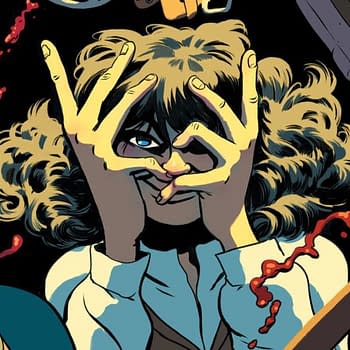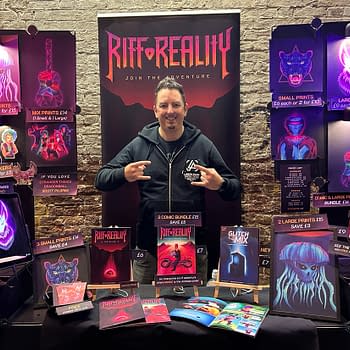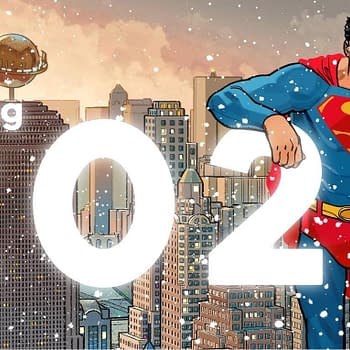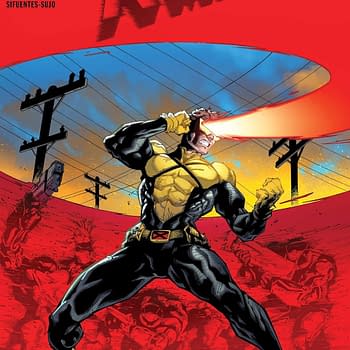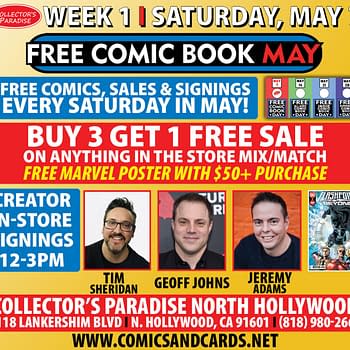Posted in: Recent Updates | Tagged: dennis o'neil, denny o'neil, how to write comics and graphic novels, How to write comics and graphic novels by Dennis O'Neil
How To Write Comics And Graphic Novels by Dennis O'Neil #3 – Homogenized For Safety

Our hero, Lancelot Noblegood, is caught in a quagmire and sinking fast. He kisses his sacred Captain Midnight Shakeup Mug and pleads for rescue. Then, on the horizon, his pal Roscoe Cydekick, coming to save him! What lesson are we to learn from this? Why, to put our faith in shakeup mugs…Uh oh. A safe has just slipped from a cargo plane flying overhead and has landed right on Lancelot. Let's rethink that lesson…
Our topic today is story structure. A while ago, a teacher of screenplay writing–it may have been John Truby–said that structure carries meaning. Amen, say I, with the nitpicky adjustment that the events embodied in the structure carry meaning, if I understand Mr. Truby correctly.
In other words, it ain't much about the talk.
Structure, apart from its meaning-toting duties, enables us to tell our tale with maximum effectiveness and in such a way that our reader/audience can become involved in and understand the action and dialogue.
What I'm about to give you is something I cobbled together decades ago because I realized that I'd probably have to be prolific and I couldn't expect the muse to visit several times every month, fickle vixen that she is. So I sought something I could control–think about–that would enable me to write comics that, if they weren't brilliant, were at least publishable. So–hold the fanfare–here it is: O'Neil's Industrial Strength Can't Fail Super Homogenized structure for a single-issue superhero story .
Hook –
Inciting incident.
Establish situation and conflict.
(Major visual action.)
Develop and complicate situation.
(Major visual action.)
Events leading to —
Climax.
(Major visual action.)
Denouement.
That will look familiar to anyone who's studied drama or screenwriting. What I'd done, when I slopped that together, was reinvent the wheel. It is your basic three-act structure, slightly tweaked, and familiar to dramaturges of all stripes. It is a logical–maybe the most logical–way to tell a story, so I shouldn't break my arm patting myself on the back for arriving at it.
Let's look just a bit more closely at some elements. Kindly ask your questions in italics, please:
Why "major visual action?" Well, it's a visual medium, after all, and we're assuming we're doing a superhero story and superheroes who don't engage in action probably don't have major movies made about them. (We'll get to other kinds of stuff later.)
What do you mean by "hook?" For openers, not what the writer's guide that DC Comics used to send our meant by the word. For them, it was what in the plot might interest the reader–Lois discovers Clark's secrets, for example. Here, we're talking about an image, or, very rarely, a bit of copy on the first page that pulls the reader into the story and prompts him to turn to the second page, where your dazzling plot and scintillating dialogue will suck him into the rest of it,
What do you mean by "inciting incident?" The same thing Robert McKee, who introduced me to the term, means when he refers to it in his screenwriting course. It is what sets the train of events in motion–Miles Archer's murder in The Maltese Falcon, for example. By the way, the hook can incorporate the inciting incident, but doesn't have to.
I know. I know…some of you are complaining that nobody does one-issue stories anymore. Well, that's not completely true, and might become less true in times ahead. And we have to begin somewhere: what I'm trying to emphasize is the importance of a beginning, middle and end, and those elements remain important whether you're filling one issue or a dozen.
Graphic novels? Okay, that is a bit of a separate topic and on a future agenda.
Now, about those longer stories. The most common structure in television drama, or an increasingly common one, anyway, is what I call the "uberplot" structure, mostly because I don't know its real name. It is very applicable to comics and, in fact, has been used, in a slightly different iteration, in comics. The reason is obvious: comics and serial television face the same problems, giving the hero something satisfying to do in each episode, and yet giving the series continuity–the illusion of real life and a reason for the audience to keep coming back. The solution is to give the hero some big. Overriding task that will take a long time to settle and smaller tasks he accomplishes in every installment. So, to take a current example: CBS's show The Mentalist. Every week, he helps those waggish funsters in the California Bureau of Investigation solve a murder. But his real concern is finding the man who killed his wife, and his work for the CBI is a means to that end. Presumably, down he line, he will. (Let's hope he has better luck than Adrian Monk. That poor schlump has been after his wife's killer for eight seasons.)
Next week, more on long-form stories.
Dennis O'Neil teaches a ten week course on Writing Comics And Graphic Novels at the New York University. Classes are every Wednesday evening from 6.45pm to 9pm, starting tonight. For further information, please call NYU's School of Professional and Continuing Studies at Studies at 212 9987200






